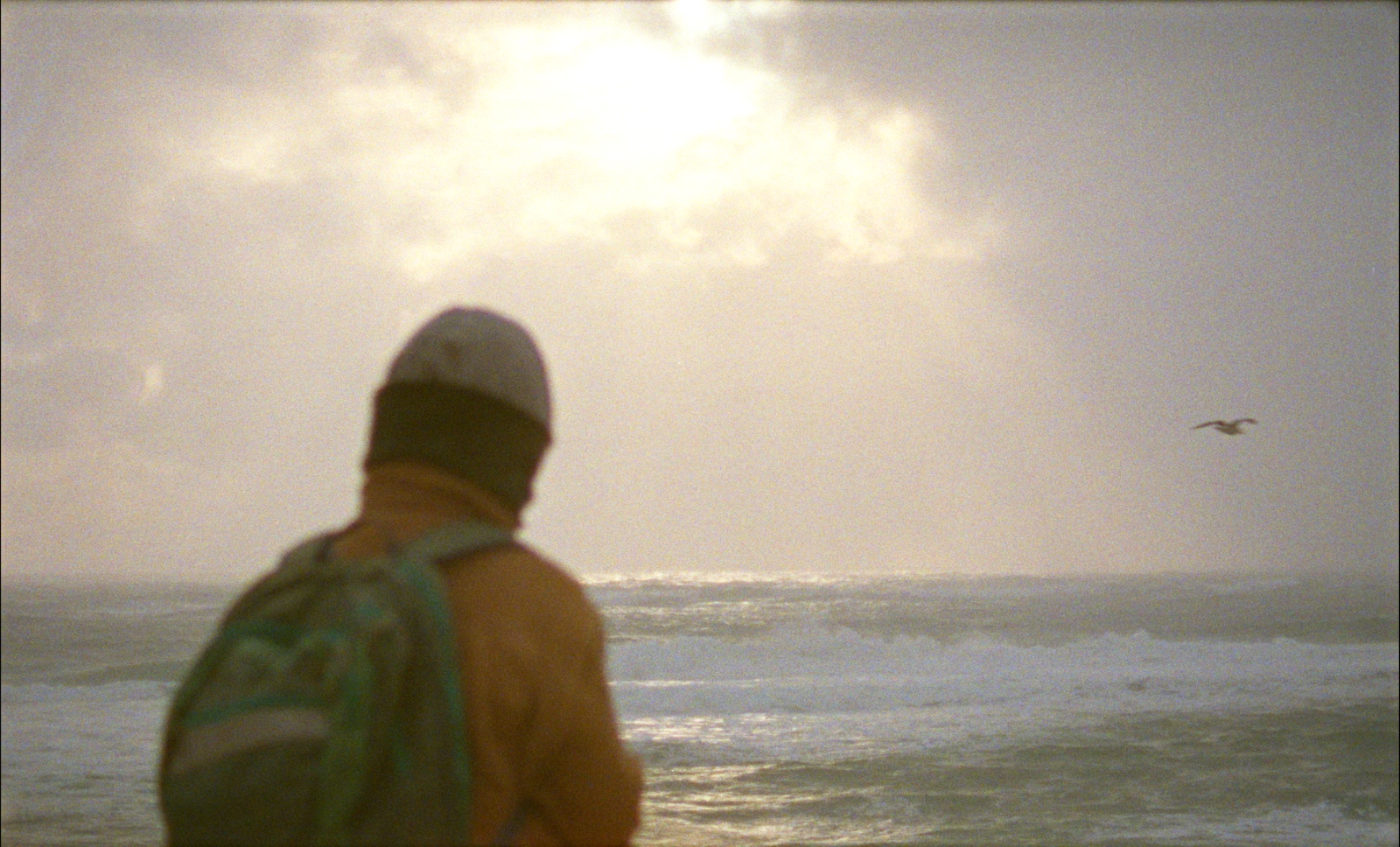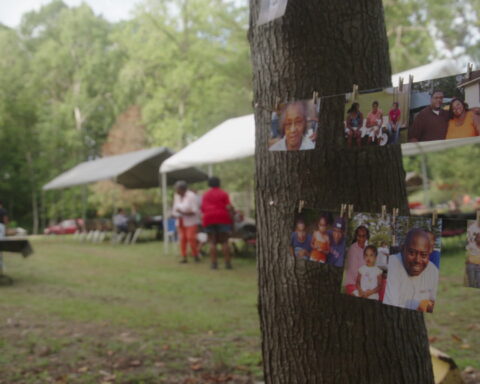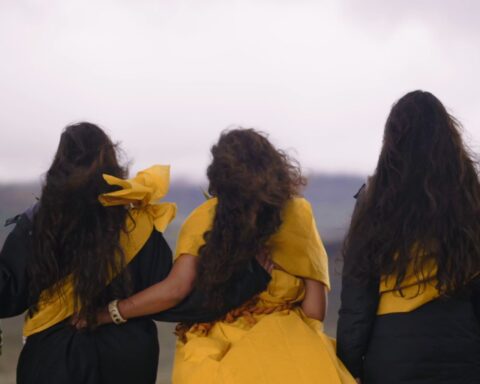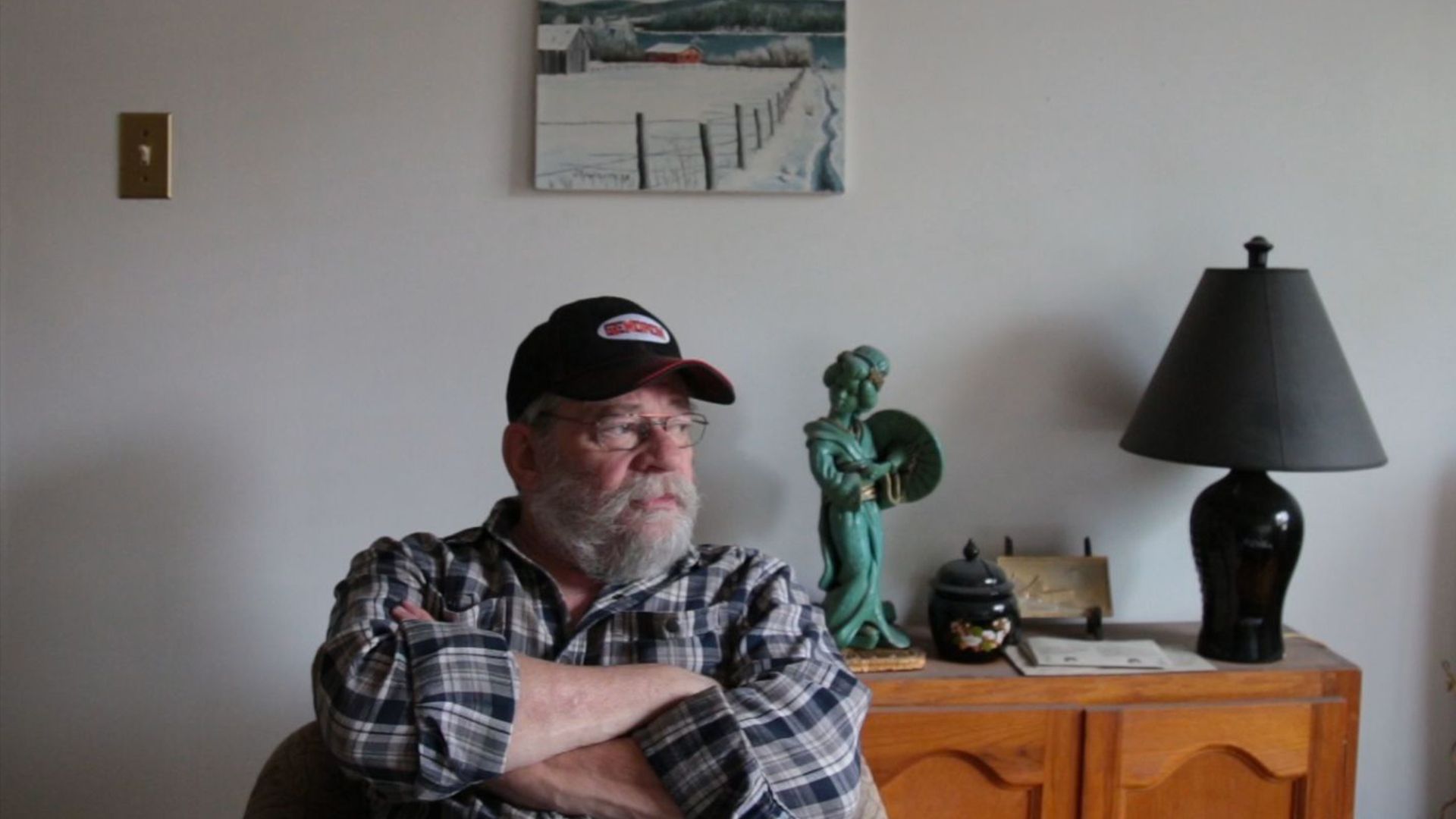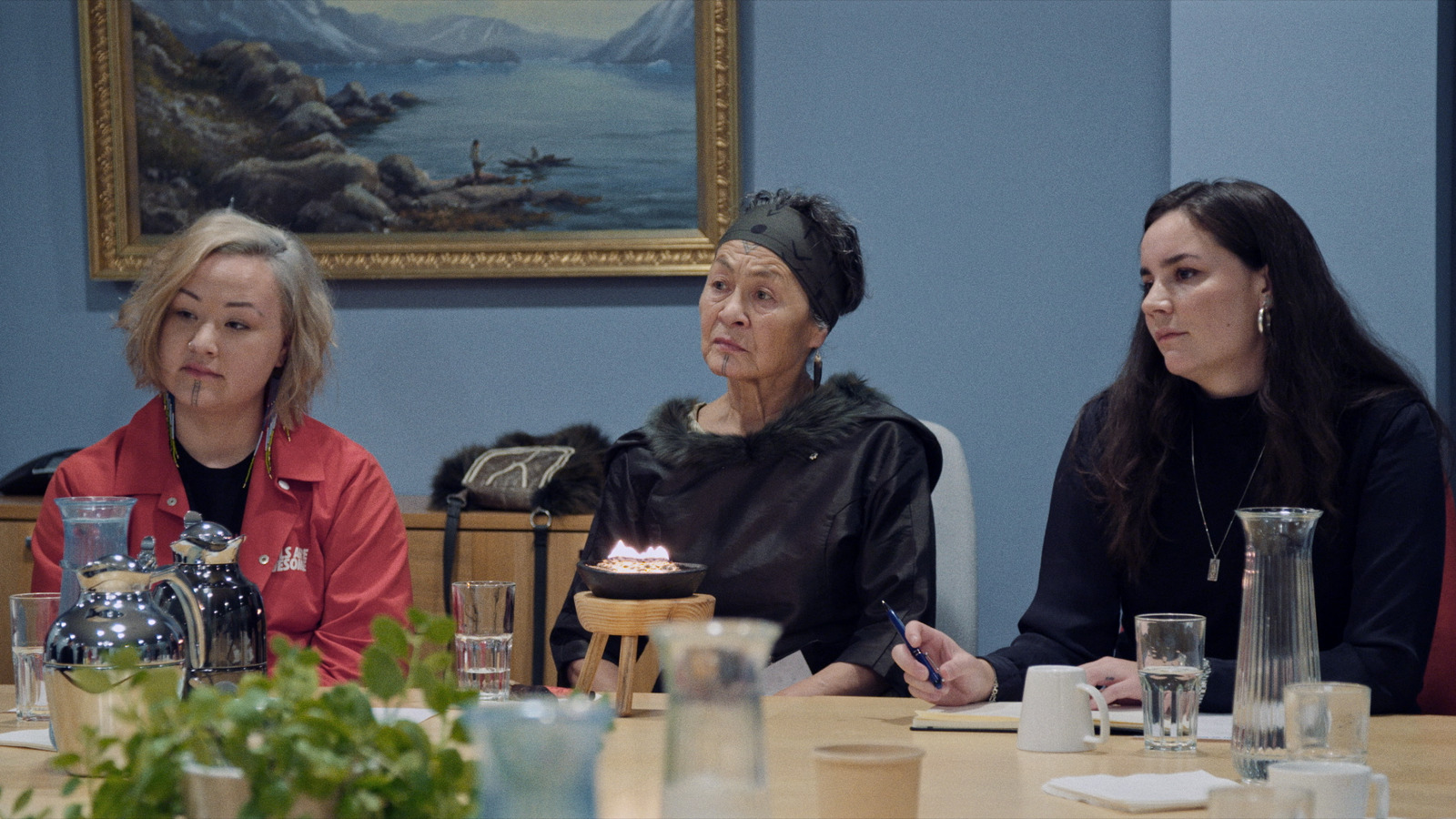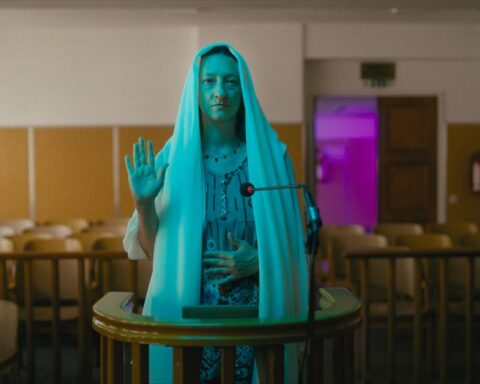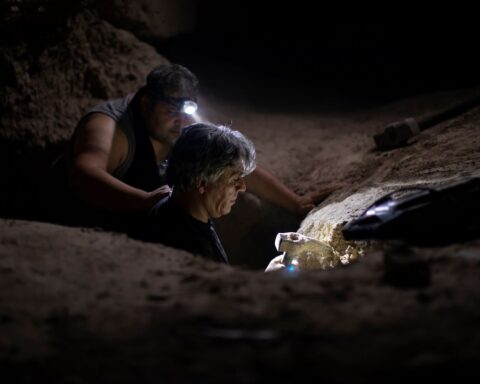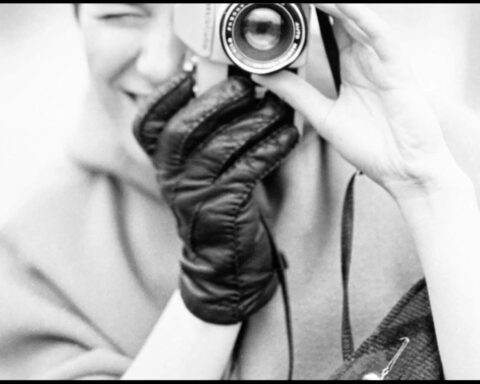One way for a teacher to get the attention of a documentary film class is to proclaim that your favourite non-fiction film might not be considered a documentary at all. It’s a technique I used for years at the Toronto university that dares not speak its name. The film in question, Chris Marker’s Sans soleil (1983), is ostensibly a travelogue of locales as far-flung as Japan, Guinea-Bissau, San Francisco, and Iceland. Simultaneously highly structured and absolutely free-form, Sans soleil is at once an enthusiastic appreciation of Japanese customs and affectations; a rueful analysis of the costs of a revolution; an affectionate evocation of Hitchcock’s Vertigo; an early exploration of where digital technology might take us—and much else besides. Crucially, while the scenes are unstaged, the film is held together by a literary conceit: Supposedly, we are hearing the letters sent to an unknown woman, the film’s narrator, from a certain Sandor Krasna, one of her close friends, or perhaps a lover. This is a fiction: There is no Sandor Krasna. Does this fictional element disqualify the film as a documentary?
For many years, I have been thinking about this technique of having a “displaced narrator.” Unlike classic “voice-of-god” docs, the viewer doesn’t feel that they are being lectured to. We’re not expected to be passive recipients; the hope is that the viewer will be part of the construction of the work. Much of the fun—and the form has a game-like aspect to it—often resides in the quirky character of the narrator. We’re introduced to a world that is curiously subjective, bound by the imagination and reminiscences of the voice—or voices—leading us on our way. Nothing is being foisted upon you. The beauty lies in its elusiveness and personality as well as its freedom to float between subjectivity and objectivity.
We’re now in the first “post-pandemic” season, which is offering us a plethora of fine films, many of which are unsurprisingly personal. We’ve spent the past two years with very few people as companions. A strong current of work resulting from this has been both hermetic and political—intimate and personal, but at the same time preoccupied with the world’s many ongoing crises. It is perhaps unsurprising in this environment to discover films making use of the device of the displaced narrator. Three extraordinary Canadian films being released this spring—Mike Hoolboom’s Freedom from Everything, Lina Rodriguez’s Mis dos voces and Jacquelyn Mills’ Geographies of Solitude—each do so, in very different ways.
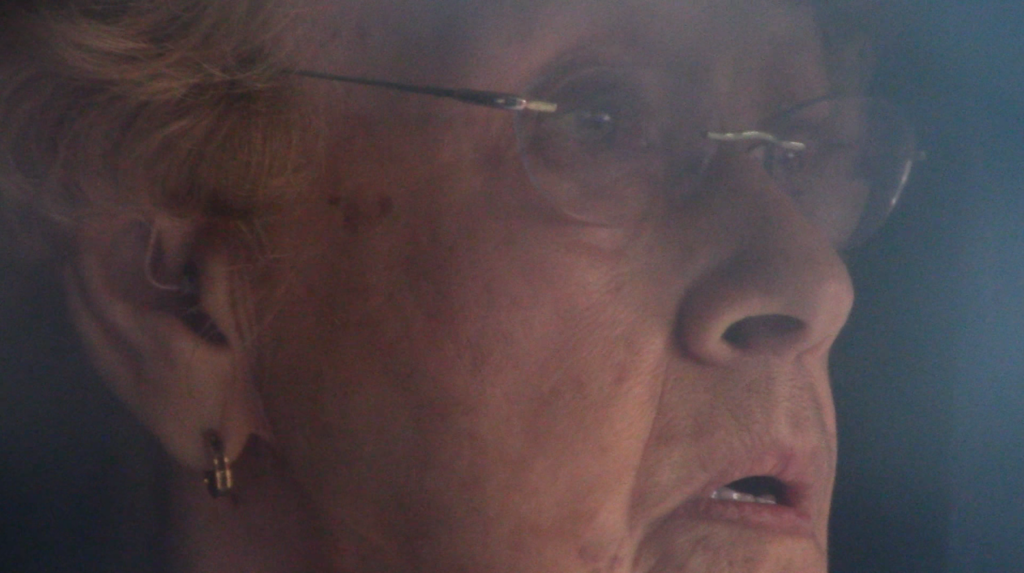
Mike Hoolboom’s Freedom from Everything is an affecting look at the filmmaker’s life during COVID and his analysis of the economic and political conditions underlying the pandemic. It starts with one of the most beautiful ballads of the 20th century, Billie Holiday’s rendition of “In My Solitude.” Written by Duke Ellington, the world-weariness of his melody has never been more touchingly interpreted than by Holiday, who seems to have had an old soul as a teenager. Full confession: I’ve known Hoolboom since his 20s, and he’s had that kind of spirit all along, even before he was diagnosed with HIV when he was quite young.
Hoolboom had initially thought of calling his film The Plague Years, but humility naturally prevented him from making the piece seem so grandiose. But it’s true that as an organizing principle, the title would have worked. Hoolboom miraculously survived AIDS when it felt like a death sentence, giving him the rare opportunity to analyse what happened to him and so many others back then. For him, the current pandemic is the second set of plague years. While HIV was an epidemic that was deadly for many individuals and deeply traumatic to the gay community, the plague of COVID-19 affects everyone. This time, we were all in the same situation.
In Freedom from Everything, we see paradigmatic shots of life during COVID—empty streets, TV and computer screens filled with vapid images. Hoolboom is perplexed by the present situation, which has felt like an apocalyptic sci-fi vision on the streets, while being almost suffocatingly bureaucratic and mundane on a day-to-day basis. It’s not the same as the former plague, clearly, but he feels that there are governments to be blamed and institutions to be interrogated now, just as there were the last time.
Hoolboom’s work moves freely from the past to the present. The rage felt by people with HIV back in the ’80s is evoked through archival footage of rallies and demonstrations, astonishingly awful footage of Reagan’s press secretary making fun of his own ignorance of the “gay plague,” and, best of all, riveting scenes with David Wojnarowicz, the brilliant gay artist and activist who analysed, fought, and died from the disease. His clear voice bursts through, dismantling the notion of a unitary American nation. The hatred of and ignorance towards gay people at that time is made all too clear.
Freedom from Everything reminds us of that era, one in which, as despondent young artist, Hoolboom suffered outrageously, as did so many at that time. In deftly edited archival footage, Thatcher and Reagan are shown as the iconic, still-terrifying figures that led the West then. Hoolboom quotes Thatcher’s famous phrase, “There’s no such thing as society.”
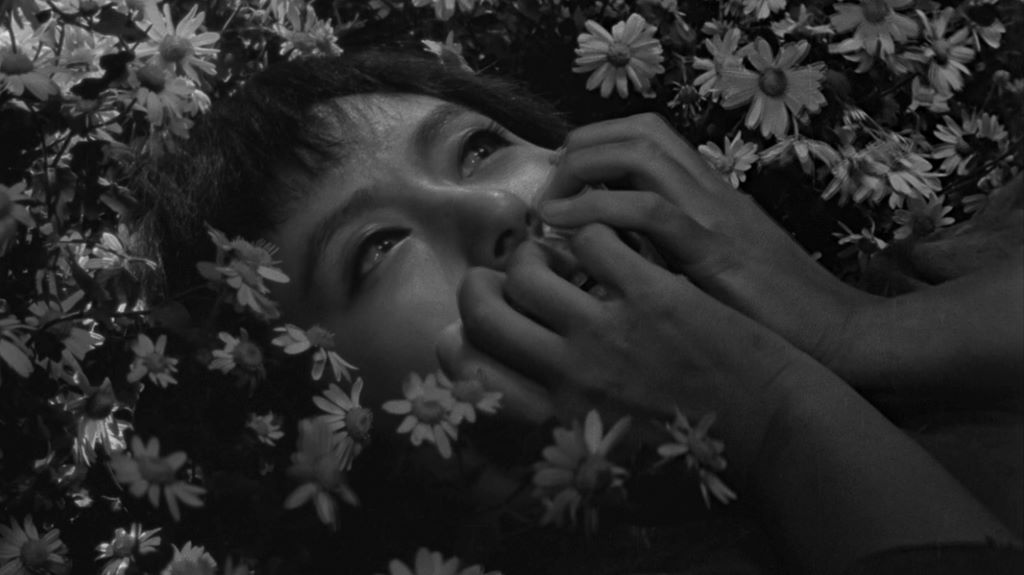
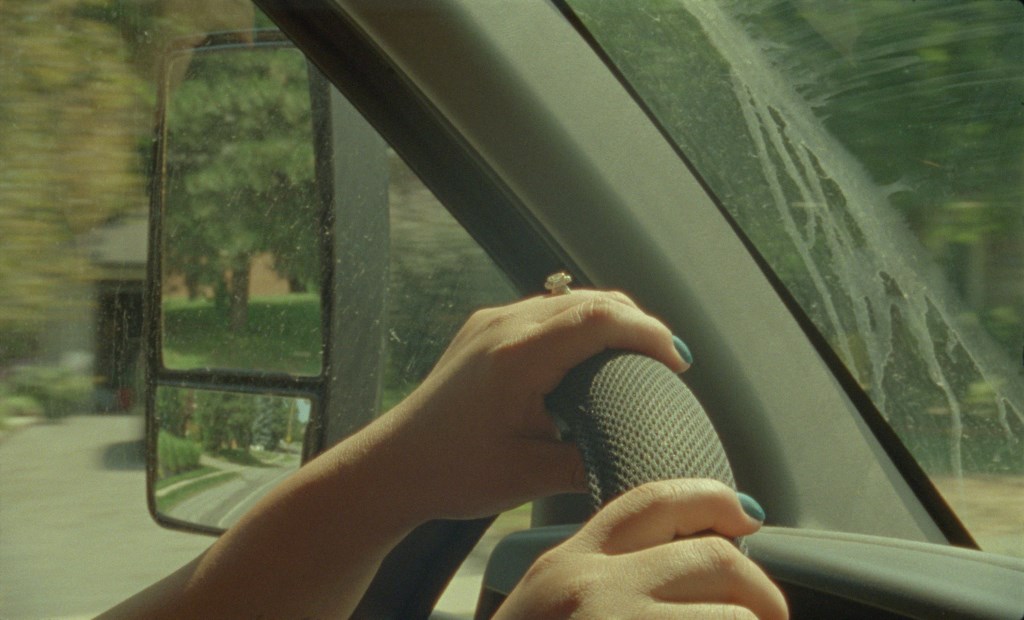
Halfway through, Freedom from Everything transitions from an intimate disquisition on the two plagues, HIV and COVID-19, into an analysis of what’s taking place in contemporary politics. The word that preoccupies Hoolboom is “freedom.” He shows footage of a rally of anti-maskers near Toronto’s City Hall shouting that word and wonders what it means to them. Here is where the film moves into something more political; Here, Hoolboom begins to incorporate the work of Hito Steyerl, the German-Japanese artist and theorist, whose 2013 essay “Freedom from Everything” gave Hoolboom his film’s title. Steyerl’s essay starts off with an evocation of George Michael’s song and video “Freedom 90,” and moves to a critique of Akira Kurosawa’s iconic Yojimbo (1961), in which a samurai plays two warring factions of a town off against each other. Steyerl uses Kurosawa’s masterpiece as an allegory, the figure of the ronin of the Japanese middle ages standing in for the freelancer of today.
That notion of what a free-lancer can do is at the heart of a critique of the society we have now. If your services are being bought by the highest bidder, then do you care who wins or who loses? You can run a prison or fight on either side of a battle in the Middle East or Asia when you’re a mercenary. In the film, Hoolboom quotes Steyerl: “They engage in free-floating loyalties that are subject to economic and military negotiation. Thus, democratic political representation becomes an empty promise, since traditional political institutions only give negative freedoms to freelancers and mercenaries: the freedom from everything, the freedom to be outlaws.” And that’s the same freedom that George Michael sang about in his video: “The insignia of his stage persona—the leather jacket, the jukebox, and the guitar—are destroyed in explosions. Freedom looks like the road to heaven—but it feels like the road to hell.”
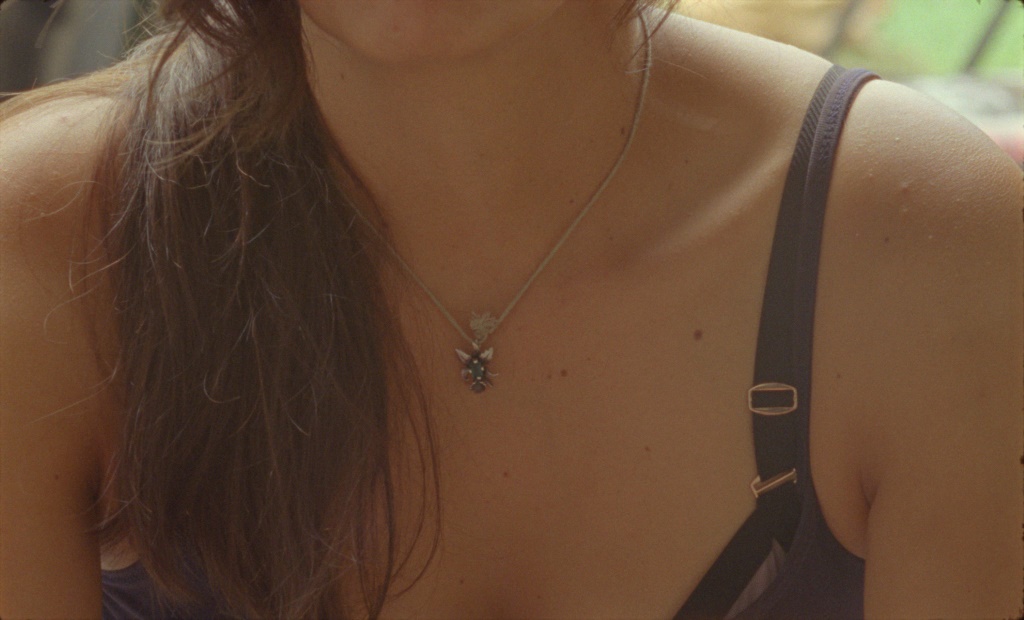
For Hoolboom, the disembodied narrator helps to evoke the paradoxical experience and discourse of freedom of the neoliberal era and the two plagues of COVID-19 and HIV. In Lina Rodriguez’s Mis dos voces, an essay film about women who have immigrated to Canada from Latin America, the technique is a way to destabilize conventional perceptions. Rodriguez refuses to show the women—Ana, Claudia, and Marinela—on screen, relying instead on their disembodied voices. In doing so, she disrupts the standard liberal approach to making a documentary about workers from another culture and society. As viewers, we’re not allowed to adopt an all-too-easy sympathetic gaze. By rendering them invisible, as they are to most people, Rodriguez has turned the camera on us: Who are we to appraise others for the sympathy that they deserve to be granted?
Rodriguez, who is a scholar as well as a cineaste, was inspired in her narrative strategy by another artist, filmmaker, and academic, Trinh T. Minh-Ha. Trinh’s first documentary Reassemblage (1982) upended anthropological and filmmaking practice by offering a subjective look at life in a village in Senegal that revealed that women were truly running the show. In the film, Trinh observes the rituals and customs of village life but offers no explanatory narration; instead, in a revolutionary utterance, she says, “I do not intend to speak about, just nearby.” In positioning herself this way, Trinh revealed the conventions of documentary narration as Eurocentric and patriarchal. Being “next to” the people she was filming instead of somehow “above” them allowed her to make a radically different kind of film. Her version of narrative displacement is feminist and political, giving voice to the unheard.
Rodriguez follows in Trinh’s footsteps. Rodriguez states, “I decided to focus on the very cadence of their voices, on their gestures, and on the objects, textures, and sounds of their everyday lives as a strategy to trace their respective biographies and journeys. Inspired by Trinh T. Minh-Ha…I sought to work with a delicate touch, without grabbing, capturing, or enclosing. By refusing to provide a clear correspondence between sounds and images, I built the film around an ongoing tension between what we see and what we hear.”
Jacquelyn Mills’ Geographies of Solitude is a visual and aural treat. Her film is set on Sable Island, a sandbar off Nova Scotia in the North Atlantic, and profiles its sole permanent resident, the scientist and documentarian Zoe Lucas. As with Freedom from Everything and Mis dos voces, the film is less concerned with its purported subject than with the broader context in which the subject lives—in this case, the flora and fauna that make up the rest of the life on the island.
Though Mills and Lucas present themselves as believers in objectivity—the scientific method—the film is decidedly subjective. Mills foregrounds Lucas’ voice, but largely refuses to show her body. Lucas’ displacement is not complete—we see her in winter garb now and in archival footage—but it is deliberate: Both the filmmaker and her narrator want you to know more about the natural context than about any personal drama.
Even for Canada, a country of geographic diversity, Sable Island is a unique place. It’s long and thin, more of a sandbar than an island, only two kilometres in breadth at its widest point over a 40km length. Its rolling hills, sand dunes and verdant plant life are glorious, but what truly make it remarkable are its two main animal populations: horses and seals. Mills spends a good deal of time with each. Mills’ camera captures the horses as nature’s aristocrats and the grey seals as nature’s clowns. She allows you to marvel at the horses’ splendour and gawk in amusement at the seals as they wriggle forward, bellies rolling, from the shore to a sandy bar, where they hang about, making dorky sounds.
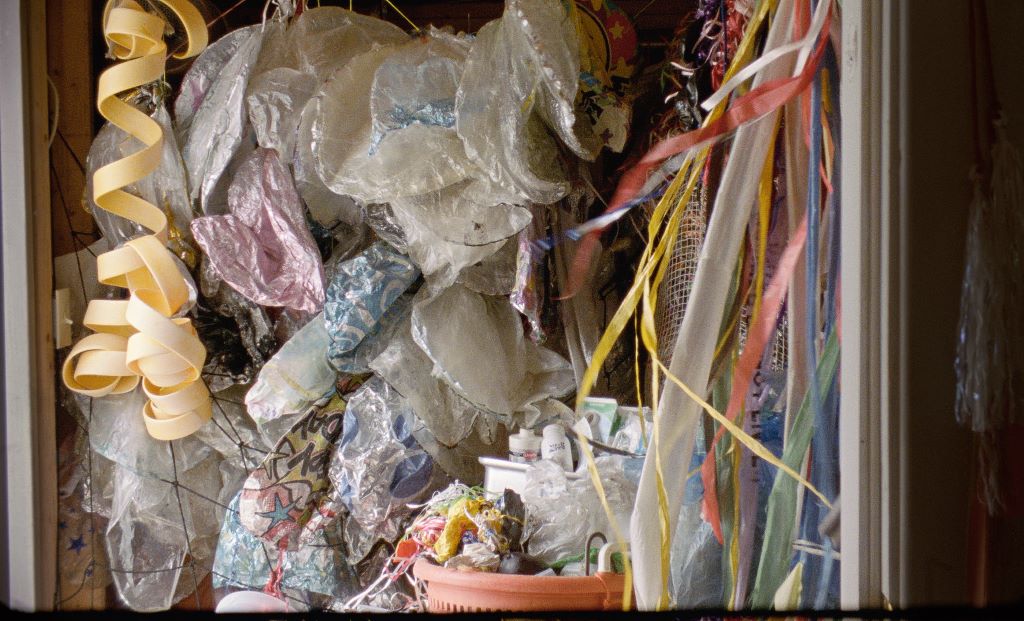
In some ways, Geographies of Solitude is an observational scientific film that harkens back to the great ethnographic works of Jean Rouch and Robert Gardner, though taking nature, rather than man, as its object. By using displaced narration, it rejects the cult of personality and refocuses on the natural world. In addition to observation, Mills also makes use of the natural environment in the physical production of the film itself. She notes: “I hand-processed film in plants, exposed film by moonlight and starlight, painted film with non-toxic emulsion, and spliced marine litter and organic matter to film.” In a way, Mills, like Lucas, is a scientist, conducting her own experiments using the material of the natural environment, while making use of them to depict the deep intertwining of nature, humanity, and art.
For their own reasons, Mike Hoolboom, Lina Rodriguez, and Jacquelyn Mills have employed narrative displacement for extraordinary essay films. Hoolboom’s usage evokes the isolation and mediatization of COVID lockdown; Rodriguez’ deployment disrupts our conventional way of seeing people who have themselves been displaced, and Mills’ shifts the focus from the individual to her context. Each film is brilliant in its own way. These three films show that the future of the essay film is stronger than ever.




